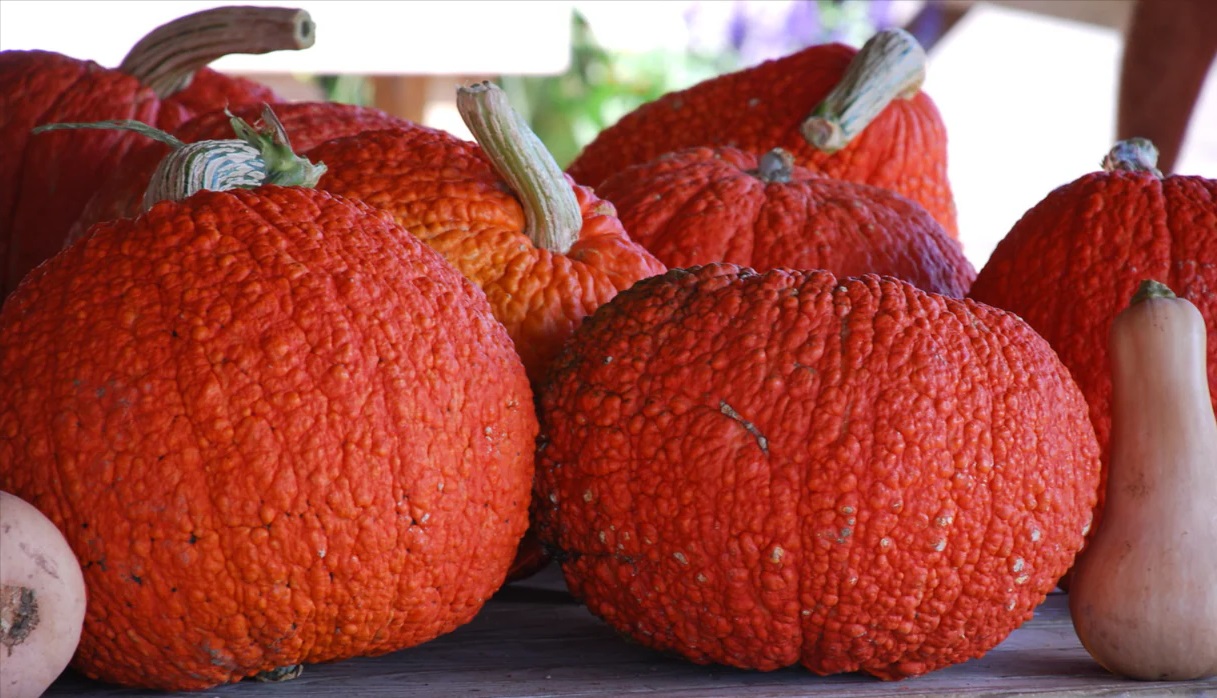
Red Warty Thing Squash might sound like a character from a fairy tale, but it's actually a unique variety of squash. Known for its vibrant red-orange skin covered in warts, this squash stands out in any garden or market. But what makes it so special? For starters, its flavor is a delightful mix of sweetness and nuttiness, making it perfect for soups, pies, and even roasted dishes. Curious about its origins? This heirloom variety dates back to the 1890s and has been cherished by gardeners for its hardiness and long storage life. Want to grow your own? It's not as tricky as you might think! With the right care, you can enjoy this eye-catching and tasty squash in your own backyard.
Key Takeaways:
- Red Warty Thing Squash, also known as Victor, is a unique, bumpy, and vibrant squash with rich beta-carotene content, making it great for roasting, soups, and baking. It's low in calories and high in fiber, offering numerous health benefits.
- This heirloom squash thrives in warm climates with well-drained soil and plenty of sunlight. Its historical significance and cultural value make it a charming addition to heritage gardens and seed-saving programs, preserving its unique traits for generations to come.
What is Red Warty Thing Squash?
Red Warty Thing Squash, also known as Victor, is a unique heirloom variety of squash. Its bumpy, bright red-orange skin makes it stand out in any garden or market. Here are some fascinating facts about this unusual squash.
-
Distinct Appearance: The Red Warty Thing Squash has a rough, warty exterior, which gives it a unique look compared to other squashes.
-
Heirloom Variety: This squash is an heirloom variety, meaning it has been passed down through generations without genetic modification.
-
Size: Red Warty Thing Squash can grow quite large, often reaching weights of 20 pounds or more.
-
Color: Its vibrant red-orange skin is not just for show; it indicates a high level of beta-carotene, which is beneficial for health.
Growing Conditions
Growing Red Warty Thing Squash requires specific conditions to thrive. Here are some key points to consider if you plan to cultivate this squash.
-
Warm Climate: This squash prefers warm weather and should be planted after the last frost.
-
Soil Requirements: It thrives in well-drained, fertile soil with a pH between 6.0 and 6.8.
-
Sunlight: Red Warty Thing Squash needs full sun, requiring at least 6-8 hours of direct sunlight daily.
-
Watering: Consistent watering is crucial, but the soil should not be waterlogged. Aim for about 1 inch of water per week.
Culinary Uses
Despite its unusual appearance, Red Warty Thing Squash is quite versatile in the kitchen. Here are some ways to use it.
-
Roasting: The flesh of this squash is sweet and dense, making it perfect for roasting.
-
Soups: Its rich texture adds depth to soups and stews.
-
Baking: You can use it in baking recipes, such as pies and muffins, similar to pumpkin.
-
Purees: The flesh can be pureed and used in various dishes, from sauces to baby food.
Nutritional Benefits
Red Warty Thing Squash is not just a pretty face; it packs a nutritional punch. Here are some of its health benefits.
-
Rich in Beta-Carotene: The bright color indicates high beta-carotene content, which is good for vision and immune function.
-
Low in Calories: This squash is low in calories, making it a great addition to a healthy diet.
-
High in Fiber: It is high in dietary fiber, which aids in digestion and helps maintain a healthy weight.
-
Vitamins and Minerals: It contains essential vitamins and minerals, including vitamin C, potassium, and magnesium.
Historical Background
The history of Red Warty Thing Squash adds to its charm. Here are some historical tidbits.
-
Origin: This squash variety originated in the United States and has been cultivated for many years.
-
Name: The name "Red Warty Thing" was given due to its distinctive appearance, but it is also known as Victor.
-
Heirloom Status: Being an heirloom variety, it has been preserved through traditional farming practices, maintaining its original traits.
-
Cultural Significance: Heirloom squashes like Red Warty Thing are valued for their unique characteristics and historical importance, often featured in heritage gardens and seed-saving programs.
The Final Scoop on Red Warty Thing Squash
Red Warty Thing squash isn't just a quirky name. This unique squash offers a lot more than its bumpy, red-orange skin. Packed with nutrients, it's a powerhouse for your health. Its sweet, nutty flavor makes it a hit in soups, pies, and roasted dishes. Plus, it stores well, so you can enjoy it long after harvest.
Growing this squash is pretty straightforward. It thrives in warm, sunny spots and needs regular watering. Just watch out for pests and diseases. With a bit of care, you'll have a bountiful harvest.
Whether you're a gardener or a foodie, Red Warty Thing squash adds a fun twist to your garden and kitchen. Give it a try, and you might find a new favorite.
Frequently Asked Questions
Was this page helpful?
Our commitment to delivering trustworthy and engaging content is at the heart of what we do. Each fact on our site is contributed by real users like you, bringing a wealth of diverse insights and information. To ensure the highest standards of accuracy and reliability, our dedicated editors meticulously review each submission. This process guarantees that the facts we share are not only fascinating but also credible. Trust in our commitment to quality and authenticity as you explore and learn with us.


